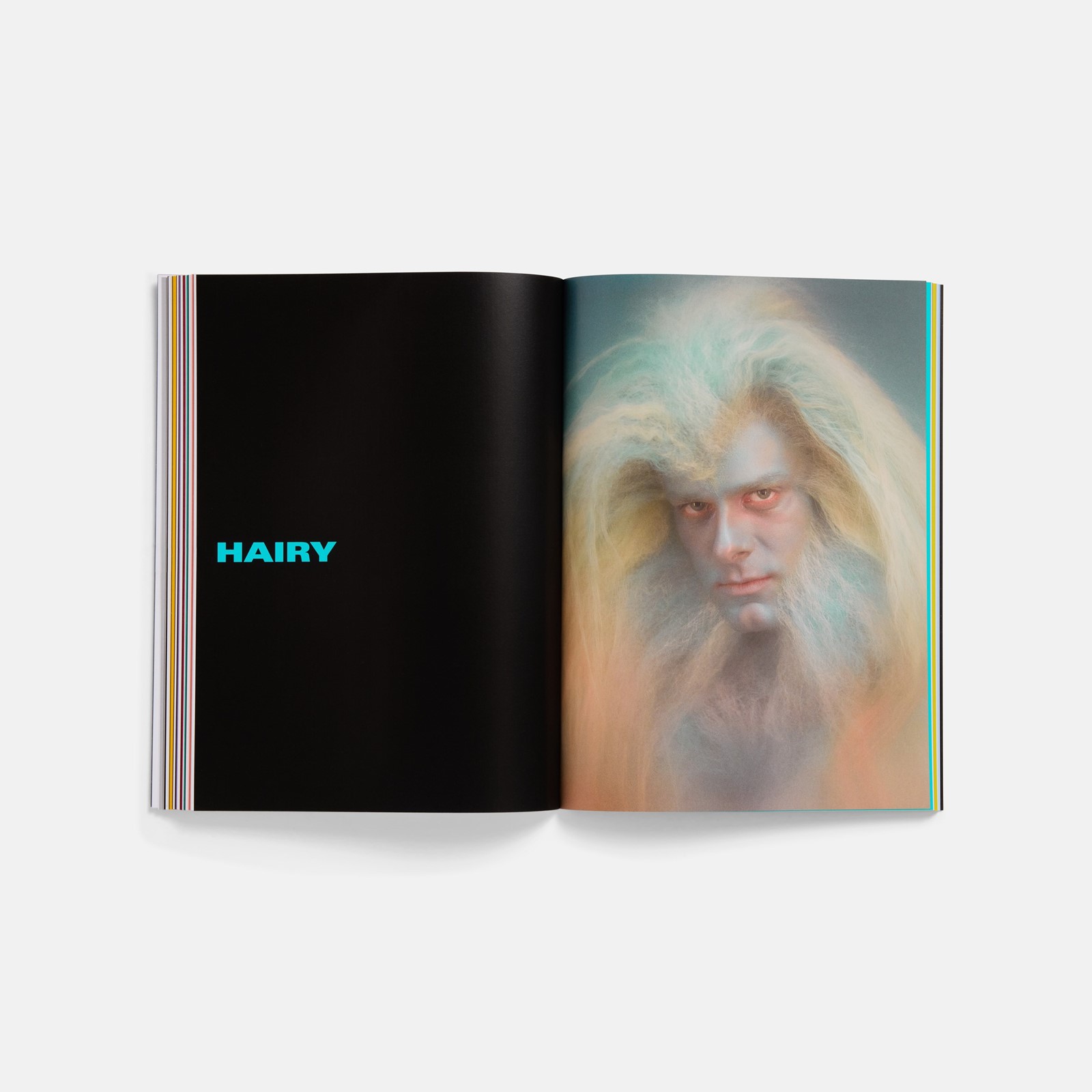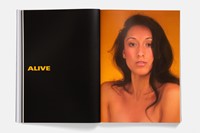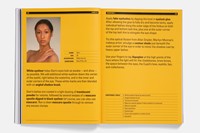From YouTube to TikTok, the world is not short on beauty make-up tutorials. But the uneasy premise of the majority of these videos is to flatten our faces and bodies into uniform standards of beauty – glossy ideals on how we should look according to others.
So, when make-up artist Emily Schubert and A24’s contributing books editor Claire Marie Healy began plotting a physical, how-to make-up manual, they made sure to root it firmly in the person sitting in front of the artist (or mirror.) And herein lies the magic of Beauty of the Beast, the duo’s first-of-its-kind manual combining beauty and special effects make-up: each tutorial begins with instructions on how to respond to the face or body, and explore the life held within. Between precise step-by-step tutorials and accompanying photographs from Jason Al-Taan, are wonderful human insights on bedside manner, continuity, and the role of a make-up artist on set. Make-up becomes a portal, a tool for character transformation, and a means of control over our own bodies.
To mark the release of Beauty of the Beast, published by A24, Claire Marie Healy and Emily Schubert caught up over Zoom to reminisce about how Beauty of the Beast came to fruition.
Claire Marie Healy: We originally met when you and I worked together on a Dazed project – I was still an editor there – together with our friend and associate Charlie Fox. I had a relationship with A24. You pitched the book to them, and then Perrin Drumm, the head of publishing at A24, commissioned the book and put us together on it! And then we went into this process of making it which, apart from the photoshoot itself, was completely remote between London and New York.
Emily Schubert: Oh my God, I tortured you. [Laughs]. But it became really comforting for me to see you every week on the computer. In terms of the book, I realised that every idea needs a thesis. So, in three sentences: the book is beauty, make-up and special effects make-up combined – the first manual of its kind. That is delivered in a very straightforward and neutral way. There’s no leading tutorial saying, ’This is how you should look,’ it’s just about how you should accomplish the looks. That became clearer the more and more we spoke about the idea for the book, right?
CMH: Yeah, this isn’t a book that’s really been seen before. And you have a ginormous library of all these old special effects and beauty books, so we’d know.
ES: I think it was the Dick Smith book that we found on eBay that was the real deal breaker for us – the 1965 Dick Smith book that he made for his son and his son’s friends and used these ten to 13-year-olds as models. That’s another thing that we decided: the book is roughly targeted at teens. Well, really anyone who is coming into their own.
CMH: It’s connected with puberty and adolescence for me, a kind of tool book and manual for people of that age. That is something that feels important. In the foreword of the book, you mention these operations that you had when you were younger, and so you thought about make-up in terms of the body as well as the face.
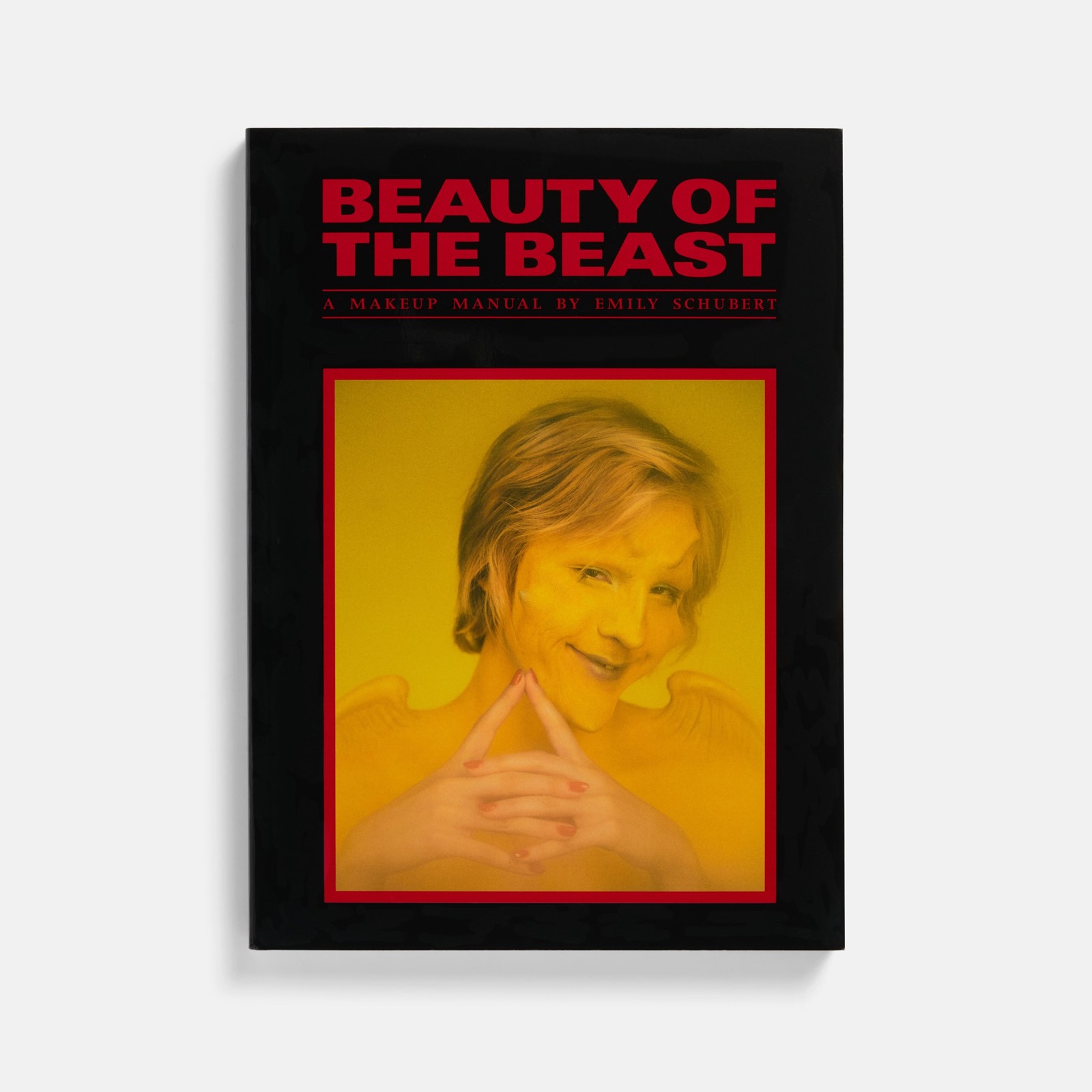
ES: Yeah, when I was little, I was kind of a tomboy, but I was really into beauty. And then I had this gruesome thing happen. It did kind of separate me from the body and made me think about body betrayal – I got to a point where I was like ’I can’t possibly be this body.’ So, I do think that there’s so much power in feeling like you have command over your body, over the form, through beauty special effects and wardrobe as well. You can buy prosthetics and clothes and put them on in all different combinations which is pretty powerful. I’m glad that it turned into something interesting, rather than something destructive for me.
CMH: That was another grounding moment when we were putting together the book – this idea of prosthetics and extreme special effects transformations. But your approach is still quite grounded in reality. You make a point about using the features already on somebody’s face, whether it’s for a very simple make-up trick or extreme special effects. There’s this thread of responding to the model in front of you and what’s on their body and face.
ES: I also want to say there’s no way this book would have happened if I didn’t meet you. I would have just stopped.
CMH: Oh! I feel the same way. I think doing it remotely, there were a lot of long Zoom sessions and that meant a lot of conversations. And even though there is a world where you can get make-up tutorials online, all these conversations we had about the body grounds it in a really special way. I think that comes across, especially in the step-by-step tutorial texts.
ES: Oh yeah, developing the tutorials on set was wild. We really had to think about how to clearly structure everything in the easiest and most neutral way possible. By having to explain everything to you, we really honed a language to make it usable.
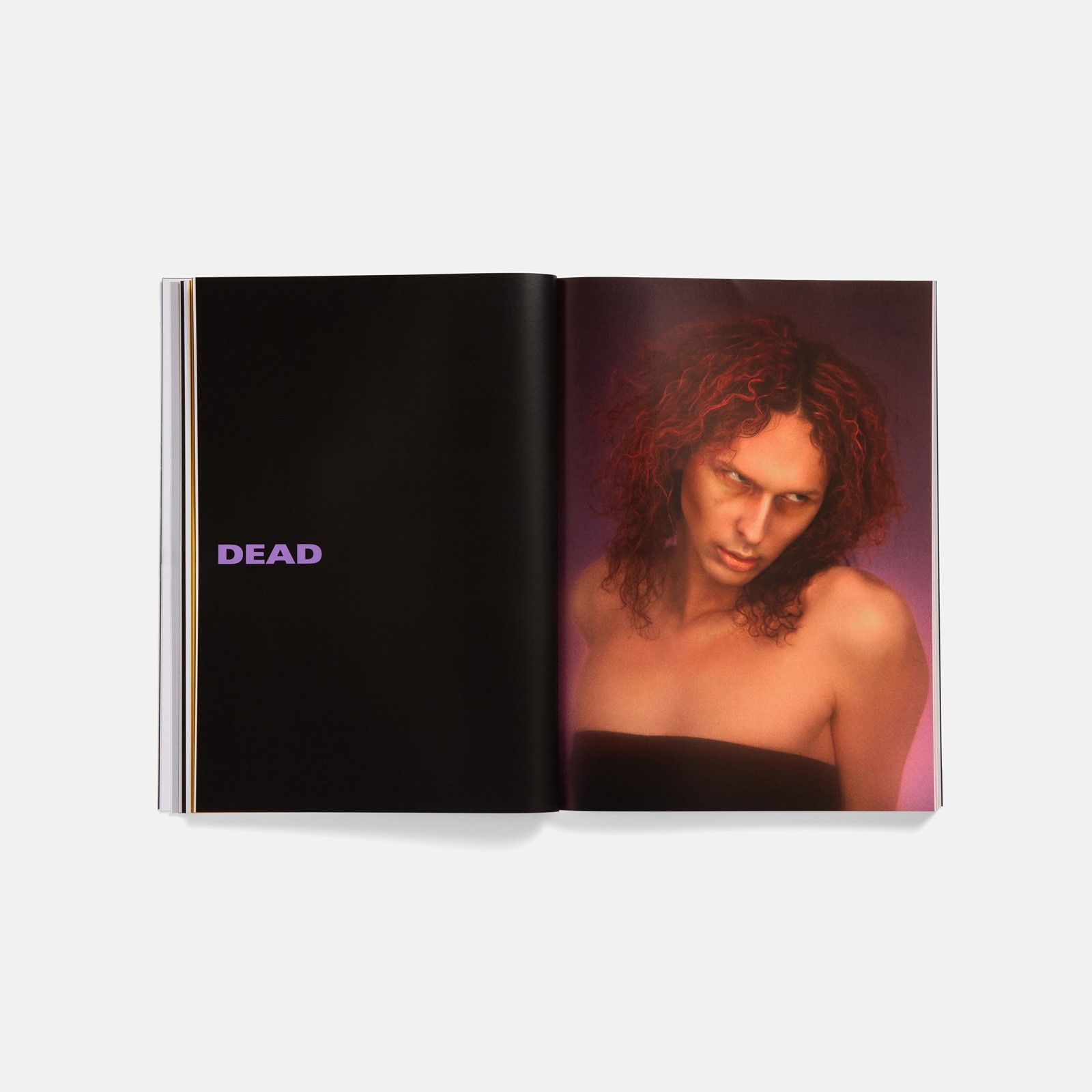
CMH: I knew next to little about make-up! It was really about going back to point zero.
ES: That really is a reason why we were such a wonderful combination. You were so diligent and so interested, it kept me going. At a certain point what I do just becomes routine and then you’d be like “What do you mean ’you just lay on the beard?’”
CMH: Yes, learning the terminology was interesting. [Laughs]. It also reflects this idea of making the book like a manual – something more technical, design-wise.
ES: Oh yeah, to have it colour-coded. And to be held in your hands!
CMH: Being able to hold it in your hands, have it next to you. From being on set, I realised it’s messy. There are tools, paints, just millions and millions of objects, bits of hair and wigs and stuff. We wanted to get that across, the tangible messiness and joy of it all. The book is really grounded in what it’s like on set, the role of the make-up artist in the industry, and also your relationship with the subject or model.
ES: Yeah, that’s right – there is this idea of the ’portal’. Someone sits in your chair as they are, and your responsibility is to usher them into a new character. But that’s something that you can do for someone else or for yourself. You can sit in front of the mirror and be like ‘OK, so where are we going to go with this?’
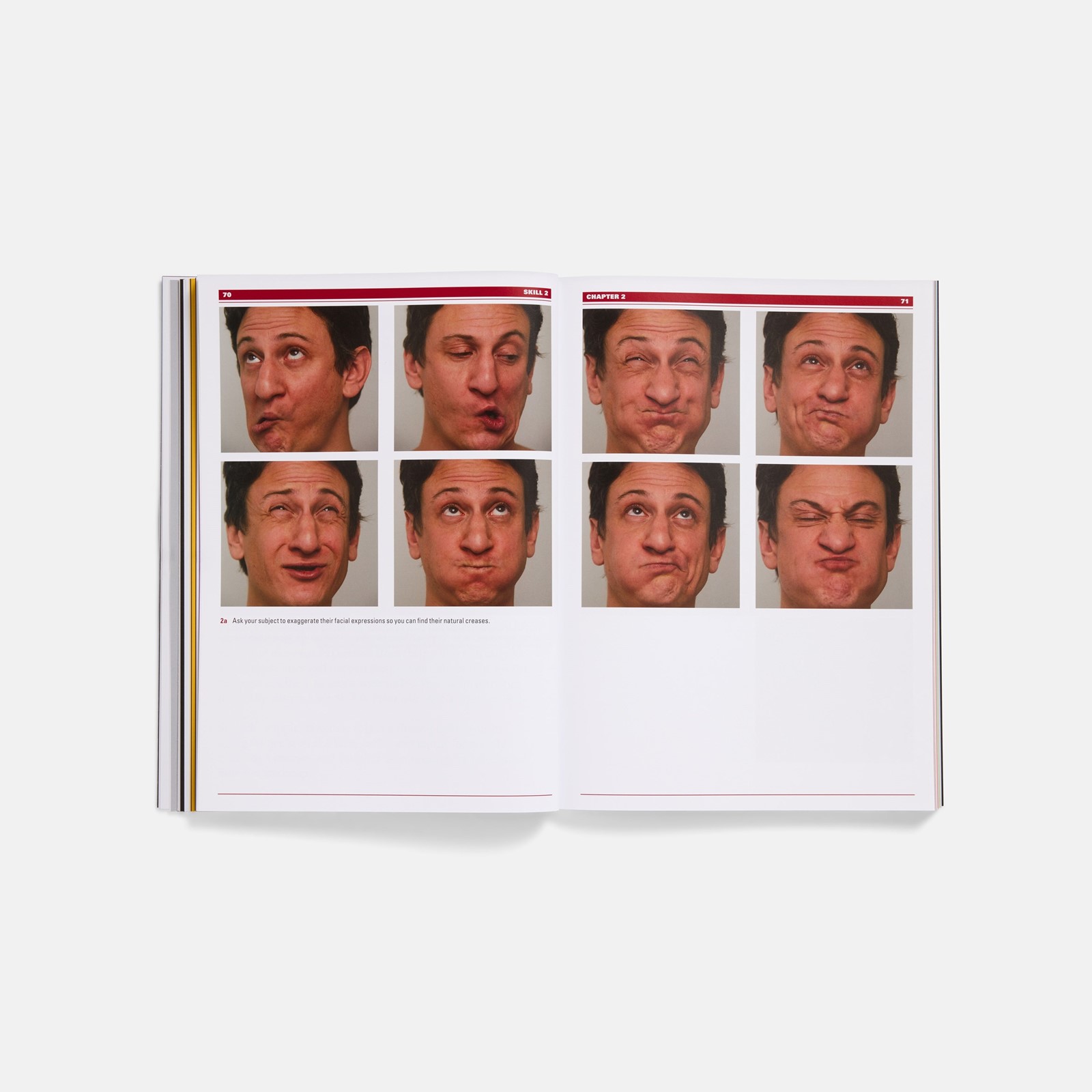
CMH: It’s like in the ‘blood’ chapter. You might have all of the skills and tools to create a realistic bloody gash on someone’s body, but I learned from you that you also need to think about the scene. What’s the action of the scene that led to this blood? In what direction would it splash? I’d never really thought about it before.
ES: A lot of make-up, well for film at least, is very relative. You see the way a character styles themselves and then how the other people around them style them. Who are they trying to emulate? Who are they rejecting? Who’s cutting their hair? That kind of thing.
CMH: All these things go back to the idea of responding to the actual person in front of you. Like looking at the mucous membrane colour of people’s skin. I find it all so interesting.
ES: Another cool side of the book is continuity. If it’s sunny outside, you always need to put sunscreen on the actor. No matter what. You might be shooting later in the day or you might be shooting something that precedes it in the script. It’s a practical spin but it’s really the nuts and bolts of make-up. Make-up is silly, but it’s also serious.
CMH: I think that’s why it was nice that the people we worked with on set, you’ve worked with before, you have a relationship with them.
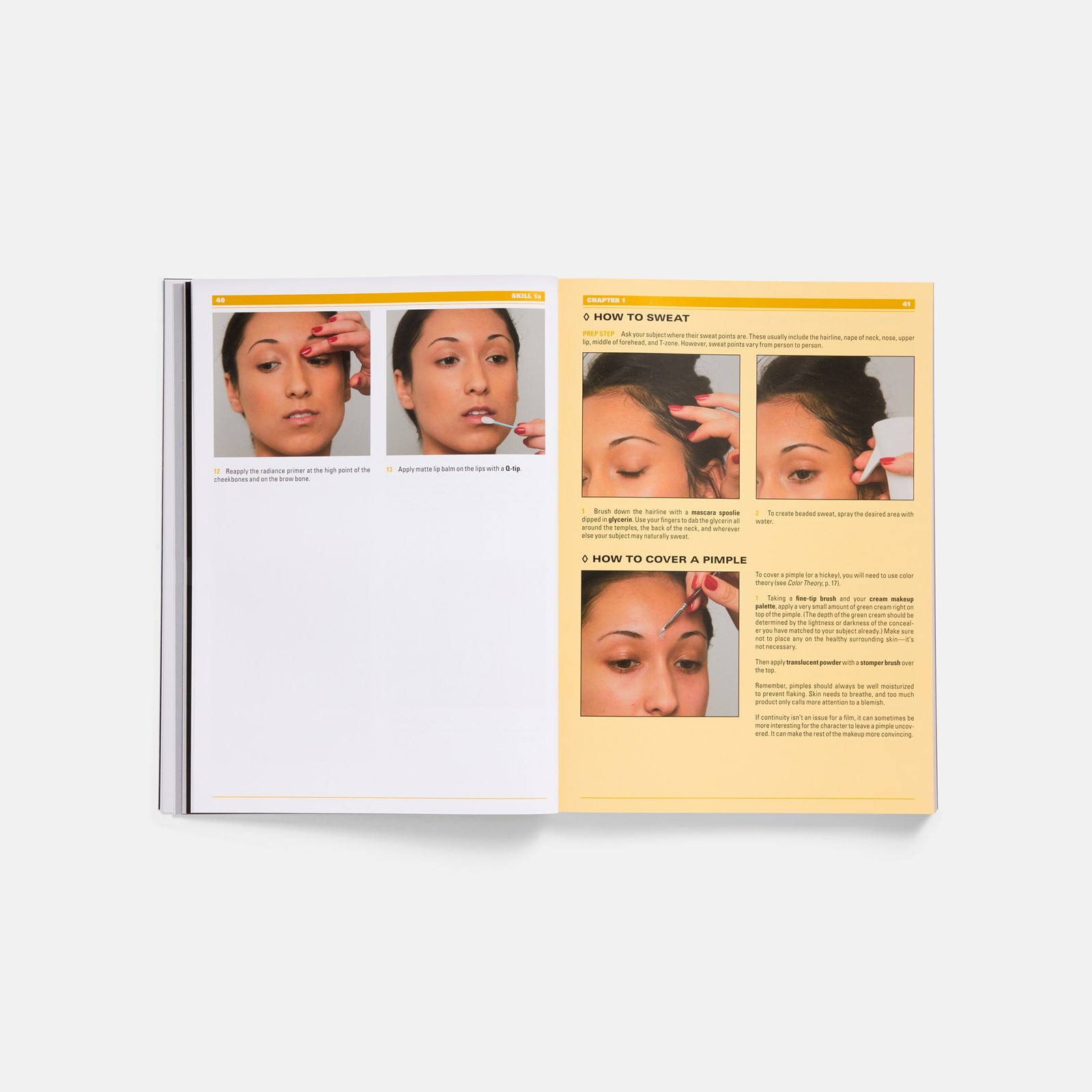
ES: Oh yeah, the models in the book are very important. I wanted to stay true to that Dick Smith vibe. Augie [August Bag] on the cover is a very good friend of mine. He is Alex Bag’s son. She’s a video artist and we’ve worked on some shows together and we’d all drive down the three of us to DC on these road trips, so it was really special to involve him.
Then two other friends of mine are in it – Stephen Gurewitz, he’s in the ’old age’ chapter and he actually edited one of the movies that I worked on last year. He looks more like Sean Penn than Sean Penn does; he is one of the most expressive people I know, I was really lucky to have him. And my longtime friend and collaborator Paul Gondry – he is the ’hairy’ chapter. He’s been working on a movie for like ten years and I’ve done special effects on it sporadically throughout this whole time, so it was really special having him there too.
And I should add that the ‘dead’ chapter is my assistant. Everyone else was cast by Eléonore [Hendricks], Elise [Raven], and Salome [Oggenfuss].
Oh, and we can’t forget that you’re in the book!
CMH: At the very end of the shoot, we were missing some ’dead or alive’ pictures. But I also have to mention that after all those long days of shooting, my dead image was not difficult to achieve. But it speaks to your skills that for the alive image I actually look fine!
Beauty of the Beast is published by A24, and is out now.
